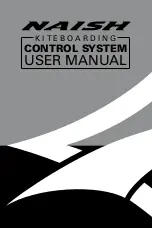
OPERATION AND INSTALLATION MANUAL
EN-1320
4.0. DESIGN AND OPERATION INFORMATION
The variable pitch propeller consists of the following main groups:
- Hub with blade bearing
- Pitch change mechanism
- Propeller blades
- Counterweights
- Spinner
- Propeller governor
- Electrothermal de-icing system
4.1. Hub
The one-piece hub is made from forged or milled aluminum alloy with the outer surface
shot-peened and anodized.
Propellers with thread-type blades
The blade bearings are special designed ball bearings, whereas the balls act as split retainers
in order to hold the blades in the hub, creating an increased safety factor against blade loss.
The outer bearing race is a one-piece part and pressed into the hub, while the inner race is split
and installed on the blade shank. The blade preload is adjusted by the thickness of plastic
shims. Blade and bearing are held in the hub by a retention ring.
Propellers with threadless-type blades
The inner bearing race is located on the blade bushing, whereas the blade are screwed into the
bushing and tightened by the clamp. The outer bearing race is a one-piece part and pressed
into the hub. The blade preload is adjusted by the prestressing nut, which holds the blade
bearing and blade in the hub.
The pitch change of the blades is obtained with a pin in the blade shank or in the blade bushing
face. A plastic block connects the blade with the piston and the axial movement of the servo
piston turns the blades. On the front piston the return spring and the sleeve, which acts as high
(low) pitch stop, are installed.
The inner part of the hub is used as the cylinder for the pressure oil. This arrangement allows a
simple and lightweight design. The front spinner support is used to have the balance weights
installed.
On the Walter Reverse System the pitch change cylinder is installed on the hub front part.
4.2. Pitch Change
Mechanism
The pitch change mechanism of the blades is obtained with a pin in the blade shank or on the
blade bushing. A plastic block connects the blade with the piston extension and the axial
movement of the servo piston turns the blades. On the front piston guide the return spring is
installed enabling feathering. With the Walter System the reverse system is dual acting,
whereas feathering is achieved by using oil pressure.
The hydraulic pitch change mechanism contains a piston. In the normal operating range the
pitch change piston moves between full feathering and the hydraulic low pitch stop. In the beta
range the hydraulic low pitch stop moves via the beta linkage until the needed negative thrust
is reached.
61-10-20
DESIGN AND OPERATION INFORMATION
Page 4-1
2017-10-06












































